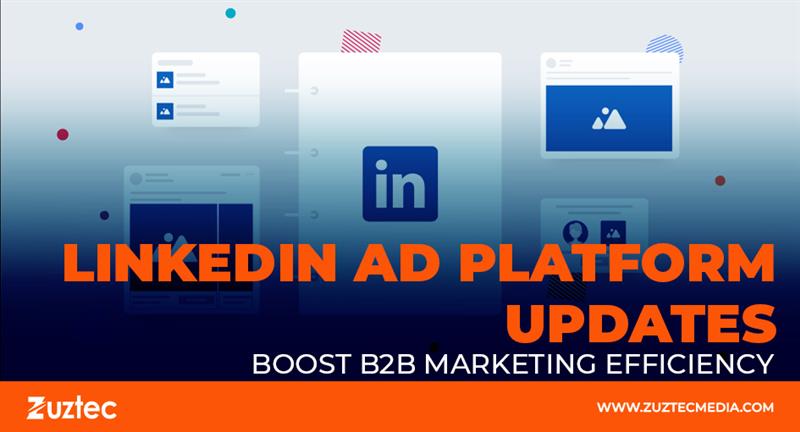
LinkedIn Ad Platform Updates Boost B2B Marketing Efficiency
LinkedIn has continued evolving as a vital advertising platform for B2B marketers, especially in recent years. Known for its professional audience and advanced targeting capabilities, LinkedIn allows advertisers to reach decision-makers, executives, and industry professionals with precision. With growing competition across digital advertising spaces, staying informed on the latest LinkedIn ad platform updates is crucial to building effective campaigns in 2025.
Over the past year, LinkedIn has introduced several updates to its ad tools, aiming to improve performance measurement, automation, and audience targeting. From enhanced lead gen forms and advanced conversion tracking to deeper CRM integrations and AI-powered optimization, the platform now offers more ways than ever to deliver personalized and results-driven advertising.
Understanding these updates and applying them strategically can significantly improve your return on ad spend. Whether you’re running brand awareness campaigns or high-intent lead generation, leveraging the full range of features now available on LinkedIn will help you reach your marketing goals faster and more efficiently.
This article explores the major changes in the LinkedIn ad platform, how they affect campaign strategies, and what advertisers should focus on moving forward. As LinkedIn becomes more competitive and intelligent, keeping pace with its updates can give your campaigns a noticeable edge in the professional space.
Key LinkedIn Ad Platform Updates Marketers Should Know
Recent linkedin ad updates have introduced a variety of new features and improvements that impact both campaign management and user experience. One of the most important changes includes the rollout of improved lead gen forms. These forms now support conditional logic, allowing advertisers to ask more relevant questions based on user responses.
Another significant update is the advanced conversion API, which enables more accurate tracking of actions taken outside LinkedIn. With greater reliance on first-party data, this tool ensures more consistent attribution even in a cookieless environment. Marketers can now connect offline events or CRM data back to their LinkedIn ads for a clearer view of ROI.
In terms of audience targeting, LinkedIn has expanded its interest-based targeting categories and improved lookalike audience functionality. These enhancements allow advertisers to reach not just specific job titles or industries but also users based on behavior and content engagement patterns.
Additionally, new ad formats like document ads and video conversation ads are helping brands stand out in crowded feeds. These formats encourage engagement through interactive and downloadable content, which can be particularly valuable for B2B lead nurturing.
Better Integration And Automation Capabilities
LinkedIn has also introduced stronger automation tools and integrations with marketing platforms to streamline campaign execution. For example, updates to LinkedIn’s Campaign Manager now include AI-driven bid optimization, helping advertisers get the most value from their budget in real time.
Marketers can also take advantage of deeper integrations with tools like HubSpot, Salesforce, and Marketo. These connections allow for seamless syncing of leads, events, and conversion data, improving campaign tracking and enabling better personalization through CRM-driven targeting.
LinkedIn has improved audience segmentation by allowing users to create and manage matched audiences more efficiently. You can upload customer lists or retarget based on specific website visits with greater ease, helping campaigns stay relevant to each stage of the buyer’s journey.
Another midbody highlight worth mentioning is that some of these LinkedIn ad platform updates directly support Account-Based Marketing (ABM). B2B advertisers can now better identify and target high-value accounts with tailored messaging across different job roles and departments.
Impacts On Campaign Strategy In 2025
With the continuous rollout of new tools and tracking solutions, campaign strategies must evolve to take full advantage of what LinkedIn offers. Advertisers should now focus on delivering high-quality content within the most suitable formats for their objectives. For instance, using document ads for thought leadership or gated case studies can build credibility and capture leads more effectively than standard text ads.
Embracing AI-powered optimization is another strategic shift. Rather than manually adjusting bids or schedules, marketers can now rely on LinkedIn’s machine learning models to automatically direct spending where it’s most impactful. This is particularly useful for campaigns with limited budgets or tight timelines.
Creative testing is also becoming more important. With access to better performance data, advertisers can now A/B test creatives more accurately and adapt their messaging based on user behavior. This makes campaigns more agile and responsive to performance trends.
Why These Updates Matter For Advertisers
Staying current with LinkedIn platform updates gives advertisers a competitive edge. Many businesses overlook how often platforms like LinkedIn evolve, and they miss out on features that could make their campaigns more effective.
By using new tools for automation, targeting, and measurement, marketers can save time and improve campaign efficiency. For example, integrating CRM data into your targeting strategy not only increases personalization but also reduces wasteful ad spend on unqualified audiences.
In conclusion, the latest LinkedIn ad platform updates present valuable opportunities for marketers to enhance their B2B advertising efforts. By embracing these tools—especially enhanced tracking, CRM integration, and new formats—advertisers can create smarter, faster, and more personalized campaigns that resonate with their audience.

